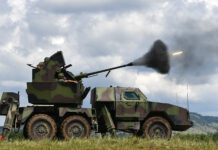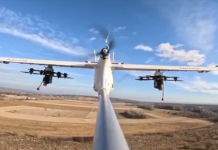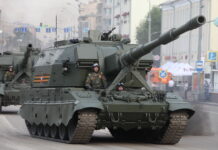State and non-state actors are seeking to build mass at sea, with maritime uncrewed systems a key line of development. The potential for adversaries to use such systems in swarm attacks is prompting Western navies to counter this threat, including at distance to push it further out
In the Persian Gulf and Red Sea, rogue actors have demonstrated that using air and surface platforms en masse to harass and attack commercial or naval shipping can have significant impact. This impact can be operational, namely limiting the target ship’s capacity to continue its course; it can be strategic, namely demonstrating to others the threat of swarming attacks. Another effect has been to strengthen Western naval efforts to develop technologies and tactics to counter these attacks.
A focus area for such navies is deterring and defending against the risk of swarm attacks by maritime uncrewed systems (MUS), especially uncrewed air vehicles (UAVs) and uncrewed surface vessels (USVs). While this threat is already a concern, events in the Gulf and Red Sea may be an early indication of how MUS capability could evolve to enhance the swarming threat.
In the Gulf, Iran’s Islamic Revolution Guard Corps Navy (IRGCN) has often used crewed fast patrol vessels to intercept, surround, and harass ships sailing through the Straits of Hormuz. In May 2023, for example, the US Navy (USN) released imagery of what it stated were IRGCN fast-attack craft swarming around the Panama-flagged oil tanker Niovi, as the vessel transited the Straits on 3 May.
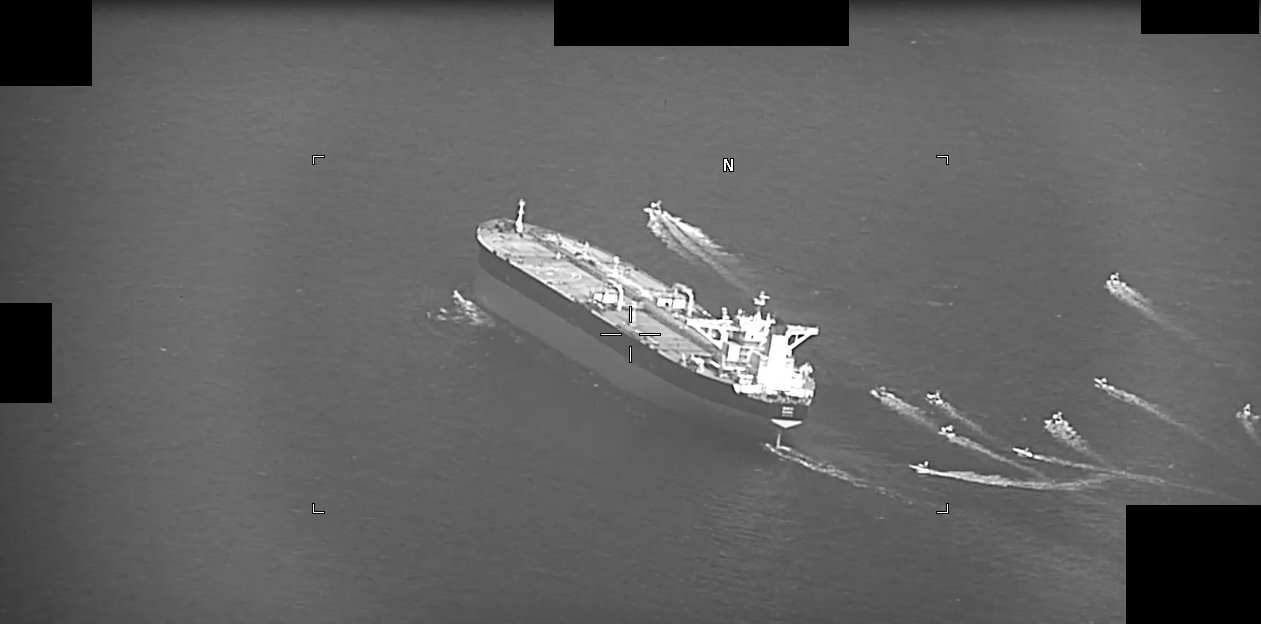
Credit: US Navy
In such circumstances, with crewed platforms likely connected by communications systems with each other and with other assets or facilities, including airborne and ashore, the human operators onboard the vessels at sea and those elsewhere could co-ordinate platform activities to create the swarming effect.
Creating such effect may thus require a degree of integrated command and control (C2) that not all actors may yet possess, including across crewed and uncrewed capabilities.
Uncrewed effect
Yet state and non-state rogue actors are already using MUS at sea with demonstrable effect. In the Gulf in July 2021, two crew were killed onboard MV Mercer Street after the tanker was struck by a UAV while sailing off Oman. The attack was an early example of what has since become an accelerating trend of using MUS, especially UAVs and USVs, as ‘one-way attack’ (OWA) drones.
The acceleration of this trend has been illustrated in events off Yemen since November 2023. There, in a regional spillover of the Israel-Hamas war that erupted the previous month, the Yemen-based Ansar Allah rebel group (known as the Houthis) began a campaign of anti-ship strikes – using UAVs and USVs, but also ballistic and cruise missiles – against commercial and naval vessels sailing in the Red Sea/Bal-al-Mandeb/Gulf of Aden corridor.
The campaign is continuing, and on occasion, large numbers of weapons have been used in the same attack. For example, on 16 December 2023, the Houthis launched numerous UAVs: in a social media post the following day, US Central Command (CENTCOM) said the USN DDG 51 Arleigh Burke class destroyer USS Carney had successfully engaged 14 UAVs, in what CENTCOM described as a “drone wave” attack. The implication is that such attacks were not viewed as swarm activities, with weapons arriving en masse but with no evident C2 integrating and co-ordinating their movement and targeting.
As the Red Sea shipping crisis has continued, the destroyers and frigates present within the assembled international naval forces have used their full spread of conventional capabilities to tackle inbound Houthi UAVs and USVs.
Carney and sister ship USS Arleigh Burke have used SM-3 Block-2A surface-to-air missiles (SAMs) against UAVs. The French Navy FREMM frigate FS Languedoc fired Aster 15 SAMs to intercept UAVs. An April 2024 Janes report noted that the UK Royal Navy (RN) Type 45 air-defence destroyer HMS Diamond had used its Sea Viper SAMs and ship guns to destroy nine Houthi UAVs between December 2023 and January 2024. Diamond has also used its 30 mm gun against incoming MUS. On 9 March 2024, the RN Type 23 frigate HMS Richmond launched Sea Ceptor SAMs to destroy two UAVs.
Many UAV kills have been effected in air-to-air operations. For example, F/A-18 Hornet aircraft flying from the USN Nimitz class aircraft carrier USS Dwight D Eisenhower have used both missiles and guns to take down Houthi UAVs.
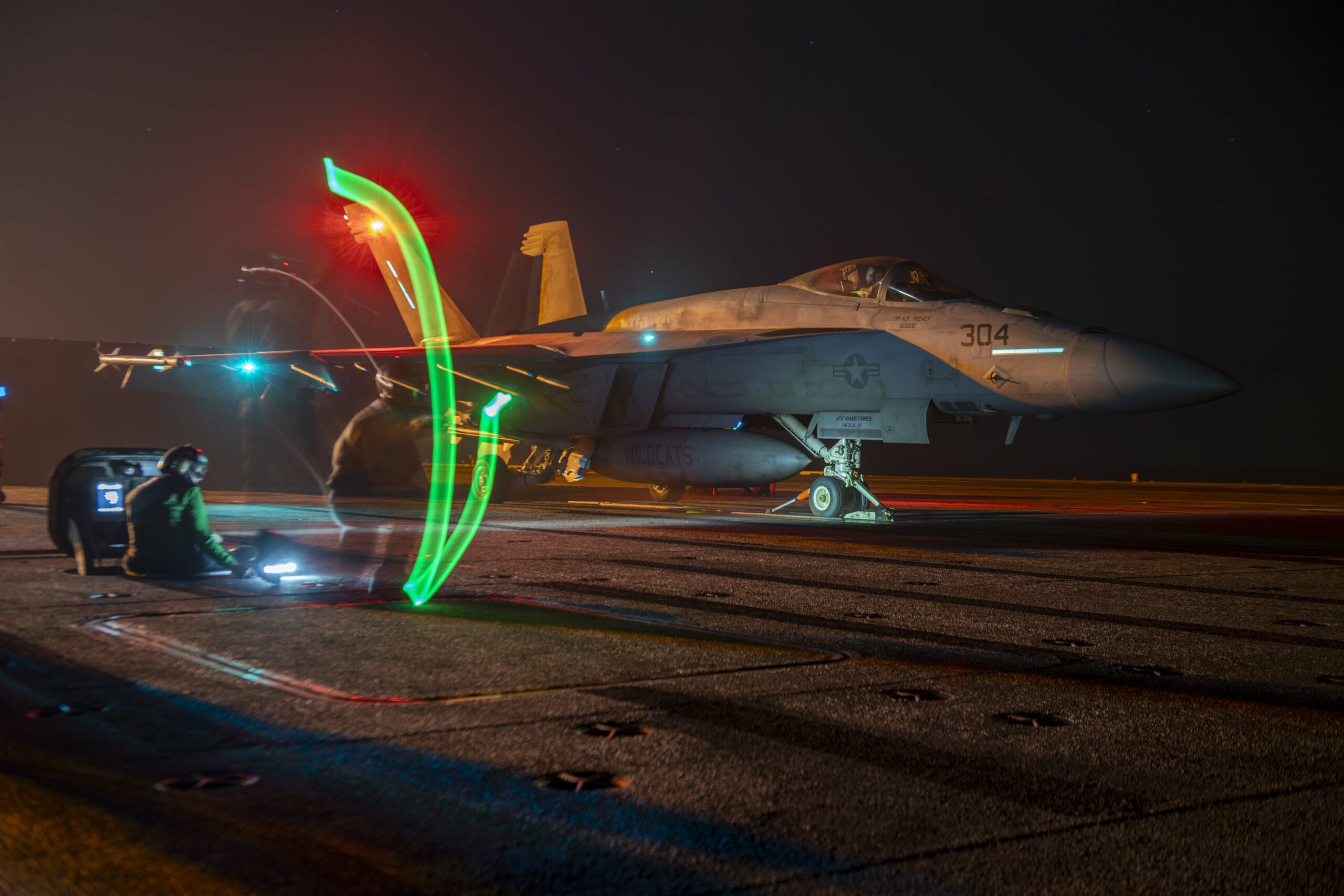
Credit: US Navy
Alongside high-end conventional capabilities, other systems can be used to tackle the threat. Electronic warfare (EW) targeting of the MUS systems, including jamming their connectivity, provides a soft-kill option. In future, directed energy weapons like lasers may provide a more sustained and cost-effective hard-kill option (rather than using missiles, which are scarcer in numbers and costlier in resources).
Exercising effect
Western naval concern over the potential for adversaries to develop capability to conduct swarm attacks using MUS is demonstrated by the fact that concepts and capabilities for conducting counter-UAV operations in particular are being tested in operational experimentation-focused exercises.
One exercise is the Portuguese Navy-led/NATO co-hosted ‘REPMUS’ (Robotic Experimentation and Prototyping augmented by Maritime Unmanned Systems) exercise. Run by the Portuguese Navy’s centre for maritime experimentation and operations (CEOM), ‘REPMUS’ takes place each September in Troia, southern Portugal. In the last few years, ‘REPMUS’ has focused on developing and testing counter-UAV and broader counter-swarming capabilities.
On the counter-UAV task, ‘REPMUS 23’ saw the first test of a radar capability developed to tackle small, manoeuvring UAVs. Fitted to the control tower at CEOM’s runway and adding air-traffic control capacity as a supplementary benefit, the Thales-made radar gave counter-UAV coverage on both sides of the Troia peninsula. Sensing capability provided for example by radar is the first key step in building capability to tackle MUS like UAVs.
“Countering unmanned systems is one of the areas we are keen to improve in ‘REPMUS 24’,” Commander Antonio Mourinha, CEOM’s director and the Portuguese Navy’s chief of staff for ‘REPMUS’, told European Security & Defence, in an interview in October 2023.
‘REPMUS’ is focused increasingly on operational experimentation and tactical development, to build greater real-world realism in the outputs developed in its testing. This focus includes countering UAVs and other MUS, including in swarm contexts. Since 2022, Cdr Mourinha explained, the exercise has been looking at building ‘blue force’ swarming capability. It is recognised, though, that developing ‘red force’ swarming capability to exercise against will augment operational realism. Cdr Mourinha underlined the importance for ‘REPMUS’ of continuing to improve capabilities to use and counter MUS.
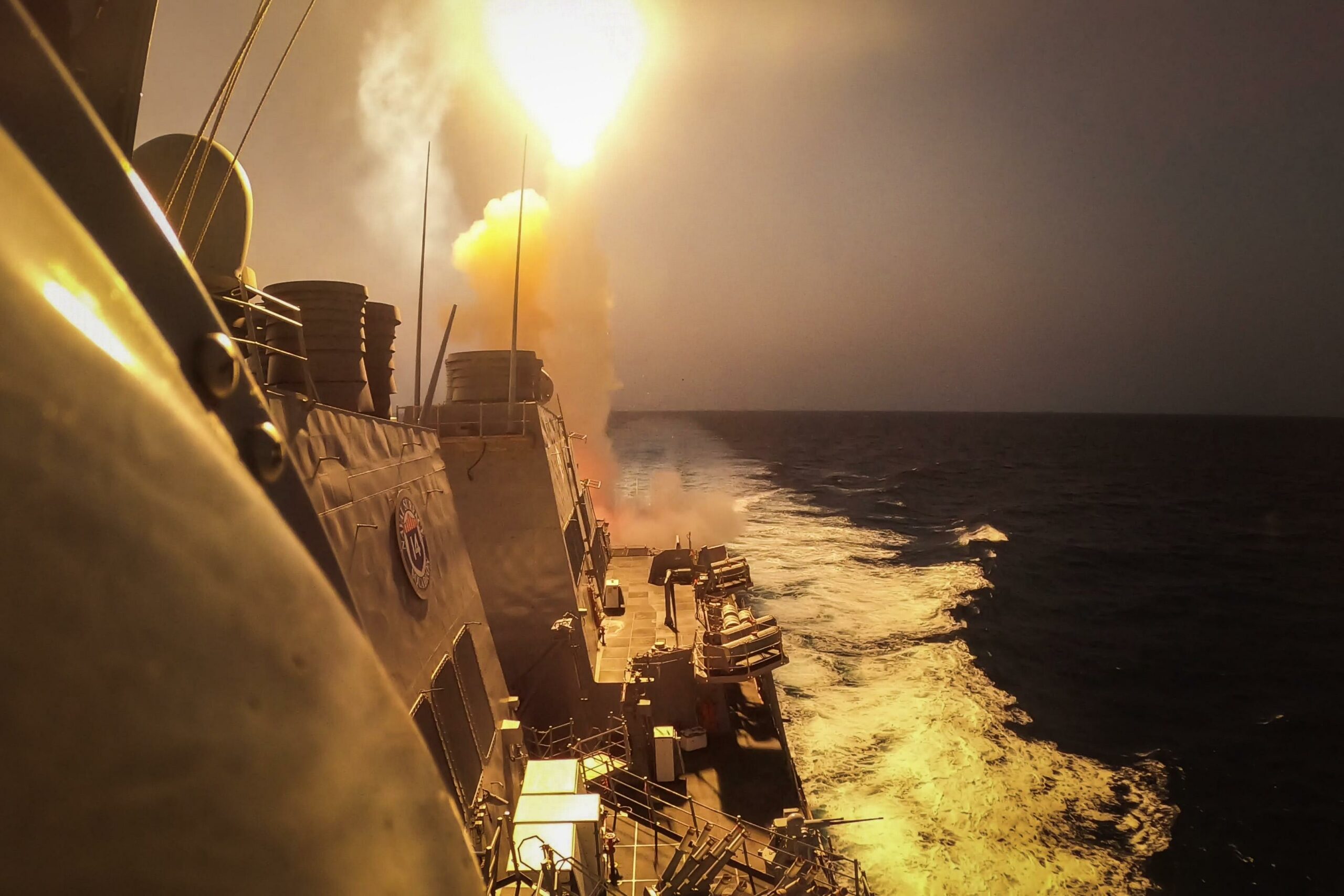
Credit: US Navy
Central to building co-ordinated capacity to both operate and counter MUS swarms is C2. Here, ‘REPMUS’ is a central hub in NATO’s development of Standardisation Agreement (STANAG) 4817, a core component within the required operational C2 network to conduct MUS operations, through standardising communications architectures, interfaces, and languages.
Capability development
Alongside naval operators, naval industry is also developing concepts and technologies for using and countering MUS, including in swarming operations.
In developing such capability, there are several steps to build into the operational process of defending against an incoming threat, whether from a missile, an aircraft, or a combination of the two – which is how ‘one way attack’ UAVs and USVs could be defined. The swarming element adds complexity to this defence.
“It’s fundamentally about detecting, identifying, and tracking the drones as far away from the ship – or the infrastructure, for instance if it’s a naval base – as possible, and giving yourself as much time as possible,” Mark Byfield, Business Development Director for Chess Dynamics, told ESD in an interview on 26 June 2024. UK-based Chess Dynamics, part of the Cohort group, is a systems house that develops optronic- and radar-based surveillance and fire-control systems for land and maritime use.
In an incoming attack, the inbound UAV or USV is likely to be travelling at speed. If it is travelling at distance, it is likely to be larger (needing more fuel capacity onboard, for example), but will still be difficult to detect. A system travelling over shorter distance could be smaller, and thus even harder to find.
“The first step is detecting the drone,” said Byfield. A ship’s radar is often the first sensor to pick up the prospective target, and can cue on other surveillance sensors and fire-control systems. Ship’s radars are often designed to detect larger targets, like other ships or incoming missiles. Thus, industries and navies have been working together to optimise these systems to be able to pick up smaller, faster-moving objects closer to the ship, Byfield explained.
Next, the surveillance and fire-control systems are trained onto the object, giving the operations room personnel ‘eyes on target’. These systems carry high-definition infra-red (IR) and day TV cameras, plus laser range finders. “The operators can look at the display screen on their console and evaluate the object, with the ability to toggle between the IR and thermal cameras,” said Byfield. “If it’s a surface target, is it potentially a USV coming towards them, or is it just a jet boat …. If it’s an aerial target, what is the elevation above sea level?” The identification element is then followed by tracking. Laser range finders measure distance to target. The director head carrying the cameras will give target bearing and elevation. The detection, identification, and tracking data is fed into the ship’s combat management system (CMS), providing live geolocation of the target.

Type 23 frigate HMS Richmond had recently started to operate in the Red Sea taking over from type 45 destroyer HMS Diamond. Bridge teams are on constant lookout to protect merchant shipping and the ship from Rebel Houthi attacks.
HMS Richmond is currently situated in the Red Sea where she is protecting the freedom of passage to merchant shipping and protecting them against Houthi Rebel Attacks.
*** Local Caption ***
With the ship’s sensors and systems combining to create a live feed of what and where the target is, the operator then takes the decision on if and how to respond. Effectors offer several different options for tackling the target, said Byfield. Missiles, guns, and lasers provide the hard-kill options, with EW countermeasures and jamming offering softer kill.
The operation and effectiveness of these various stages in the sensing and effecting process is enhanced by image and video processing software algorithms – including processing, automatic target detection, and target classification – which can be configured to automatically alert the operator to a potential threat. MUS operating in congested littoral environments, especially in swarms, present a heightened sensing, decision-making, and effecting challenge for the operator.
The classification software can help the sensor pick out the MUS target against a littoral background that may include leisure or commercial non-threat objects like jet skis, yachts, or other pleasure craft, said Byfield. “It can be selected to look for particular targets outside of the scene that is the normal pattern of life …. You can train it … to look for the characteristics of a particular type of object,” he added. Chess has also developed artificial intelligence (AI)-enhanced tracking software, such as its Deep Embedded Feature Tracking (DEFT) product, which will automatically track the target even in cluttered environments.
Together, this integrated, advanced sensor hardware and software presents a powerful and dynamic combination for rapidly tracking fast-moving UAVs and USVs, said Byfield. Such a combination is something operators are now beginning to seek as a rapidly deployable option. “There is a lot of talk of putting palletised or containerised mission-fit packages onto ships,” said Byfield. “We are looking at that type of package, where there could be a mission-specific package put together: it gets loaded at a naval base, on to a particular ship, for a particular mission.” Several NATO navies are now well-advanced in developing containerised concepts to support rapid capability deployment at sea.
The swarming concept adds a layer of complexity to the problem – particularly, how to deal with massed, moving, manoeuvring targets. “The challenge with swarms is you’ve got multiple targets that are all potentially a threat to you. So, in a traditional system, your detection system may be picking up all those targets,” said Byfield. “Our counter-[UAV] systems have been tested against swarms and can put ‘detect and track’ boxes around a swarm of seven or eight drones.”
“It’s that mass challenge of having all these potentially hostile drones coming towards you, and determining how you physically cue your effector onto each individual target in turn,” Byfield continued. “It’s that challenge of being overwhelmed and not having enough time to prosecute all the targets in that swarm.”

Credit: Chess Dynamics
“Often, the logic will be to take out the targets closest to you, because they’re the ones that are likely to cause the damage first. So, you work your way back through the swarm,” Byfield explained. Contemporary technology allows the operator to fire at one target and then move to the next while the first round is in the air: however, if only a single sensor, tracker, or gun is available onboard, then targets can still only be tackled only one-by-one. “That’s why there’s a lot of work on air-burst ammunition,” Byfield added. “If the swarm is relatively tightly clustered, with a few choice locations used for programmable rounds, one air-burst shell can take out three or four drones at the same time.”
Pacing the swarm
MUS swarming remains a relatively new concept. However, given the demonstrated operational- and strategic-level impact, the concept will continue to develop in capability and effect. Consequently, Western navies will need to keep pace with the challenge and the technology.
Again here, the first step to take is detection. “[It’s] pushing the boundaries of our sensors,” Byfield argued. This includes enhancing camera capability and technology. “If you’ve got a [target] coming across the horizon either in the air or on the surface, the further out you can pick it up – so, the higher performance of your cameras, the greater resolution of your cameras – you’re giving yourself more chance to actually see what you’re looking at,” Byfield added. “You’re then giving yourself as much time as you can.”
Other prospective upgrades in sensing, surveillance, and fire-control tracking include improving the agility and responsiveness of the sensor’s mechanical positioners that control the director heads. Rapid responsiveness, movement, and stabilisation are crucial here, said Byfield. “If you’re picking out targets from a swarm, you can move quickly and accurately between target 1 and fire on that with a laser or a gun and quickly be on target 2.”
In software terms, emphasis should be on reducing operator burden and enhancing focus on critical actions. This can be done by increased use of processing and AI, including (for example) to deliver automatic threat detection and classification, said Byfield.
“The sensors, the director platforms we mount them on, and the software have all got a role to play in pushing counter-MUS capability forward and giving the crew more time to deal with that threat,” Byfield explained. Pushing the threat further out in distance and time terms is crucial. “The more time we can give the crew to know what they’re dealing with, and preferably further away from the ship, the more likelihood they have of neutralising it by whatever methodology they decide is most appropriate,” he added.
Flipping coins, turning tables
Flipping the coin over, an adversary will also face challenges in maintaining the advantage offered by swarming capabilities. The reality of the Houthis conducting wave, not swarm, attacks indicates a lack of connected C2. Western navies’ increasing capacity to detect and prosecute threat targets at distance may in turn force the attacker to move launch sites further back – thus compounding the challenge of having to conduct co-ordinated C2 (including targeting) over even greater distances to target. Increased range to target may prompt development of larger UAVs or USVs. This in turn increases vulnerability.
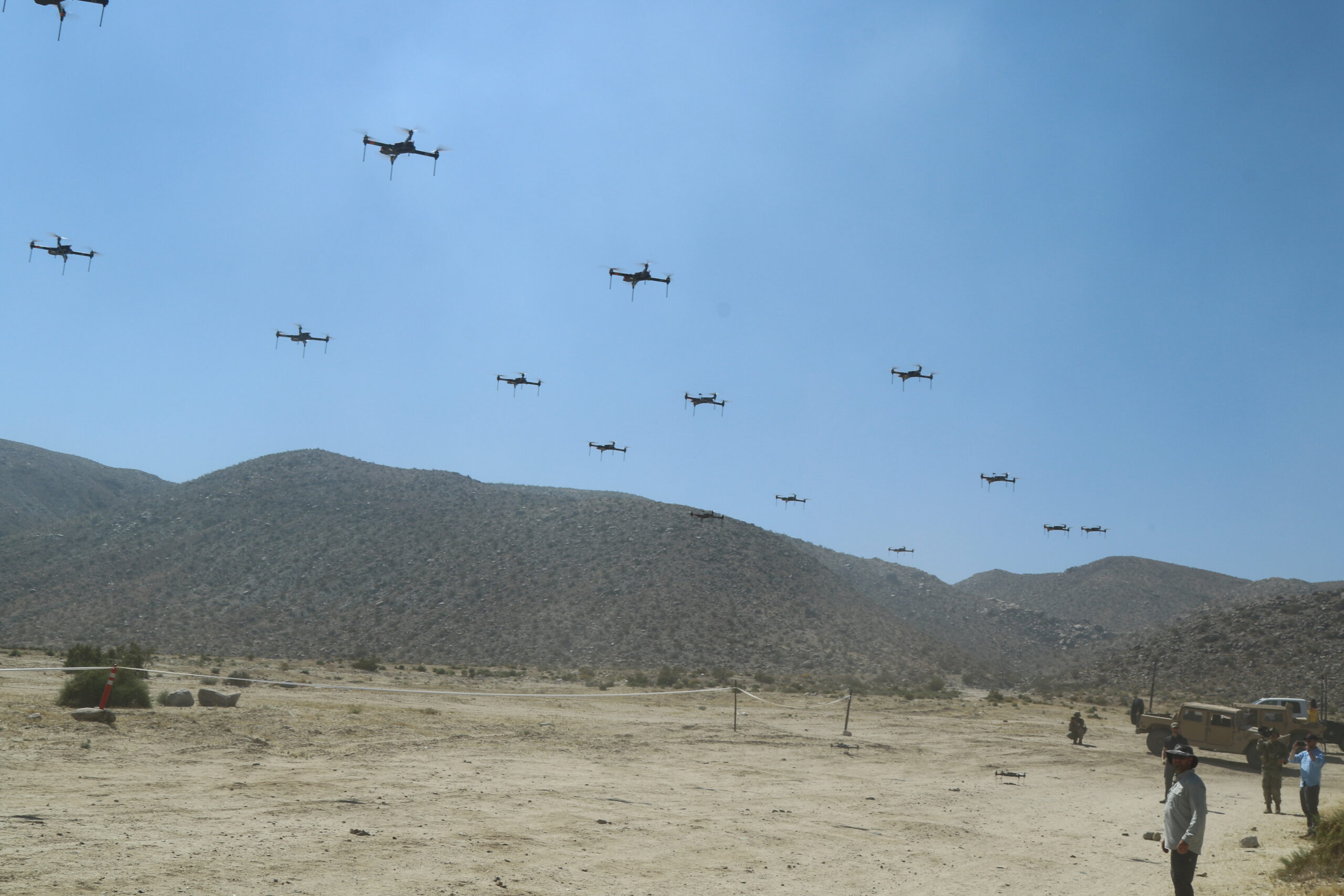
Credit: US Army/Pv2 James Newsome
One future swarming threat and capability aspect now emerging in discussions within and amongst Western navies is developing their own MUS swarming capability, to enable their own MUS mass to have force multiplying effect. The UK, for example, now has the ‘Multi-Domain Integrated Swarms’ (MDIS) programme. This reflects another wider trend across Western armed forces – building integrated multi-domain operational capability.
One industry player with particular focus on harnessing innovative technology, such as AI, to create capacity to scale up combat mass through MUS use including with swarming concepts, is BlueBear, a Saab company. UK-based BlueBear has been operating for almost 25 years, and became part of Saab in August 2023. In a press statement announcing the acquisition, Saab said BlueBear provides AI-enabled autonomous swarm systems for complex defence and security applications.
BlueBear has a varied product set in this area, including its Centurion C2 system, its Smart Connect avionics gateway device (which, when fitted to other platforms carrying their own avionics, enables access to BlueBear’s autonomy technologies), and capabilities such as loitering munitions.
In an interview with ESD at the DSEI 2023 exposition in London in September 2023, Saab’s BlueBear CEO Dr Yoge Patel explained that, while integrated multi-domain operations is not a new concept, it is now being shaped by new technology, including AI. “As BlueBear, we’ve now very much forged the AI-enabled autonomy: not for ‘singletons’ (ie single air, land, and maritime vehicles), but for swarms,” said Dr Patel. “This means we can now, at a button press, call up scalable combat mass. You can scale it up, scale it down.”
“There are lots of reasons why swarming and scalable combat mass go together very well,” Dr Patel explained. “It’s now not just one big grey lump that carries all the sensors doing lots of tasks. You may now have lots of little grey lumps – be they air vehicles, sea vessels, or underwater vehicles – all carrying different things and co-operating and collaborating to deliver a military effect,” Dr Patel added.
Such mass also reduces vulnerability. “You are far less vulnerable if you’ve got swarms of little things, carrying different payloads because, if one goes out, you just send in another one. You haven’t lost the entire military capability,” Dr Patel continued.
Broadly, in sum, scalable swarming with MUS can help mass be a force multiplier, while helping offset any absence of mass particularly of crewed platforms. Moreover, increasing scalable, distributed, less-vulnerable mass through integrating MUS for swarming operations including through using AI can help Western navies turn the tables on prospective adversaries – several of whom are already demonstrating increased focus on using MUS capability.
In this context, said Dr Patel, “People are worried that there are swarms incoming for a naval ship, so what do we do? Our counter to that is exactly the same: we send out similar; we send out swarms.” “I’d be surprised if most Western navies are now not thinking ‘how do I defend using autonomy, AI, and swarms?’” Dr Patel added. “What we need to do is think about our concepts of operation and concepts of use.”
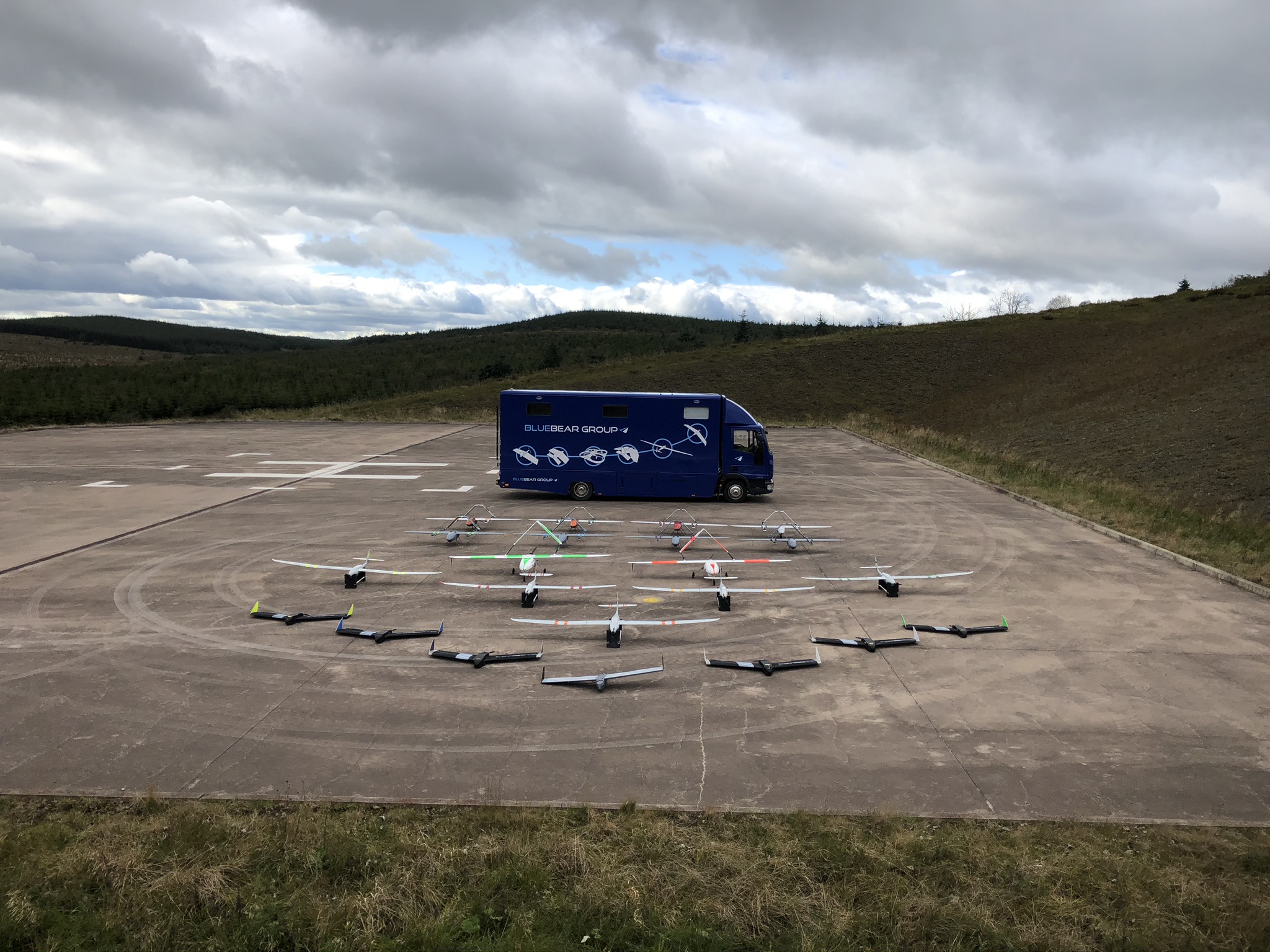
Credit: Bluebear
“In naval operations, it’s about the ring of defence – how far can you push that out,” Dr Patel continued. “In terms of uncrewed swarms, you can push out that ring of defence even further, with your surface vessels, your underwater vehicles, your air vehicles all carrying things.”
“You can do all sorts of things in terms of over-the-horizon communications links with uncrewed assets. Your ship can now absolutely stand off a little bit [further out],” Dr Patel explained. “So, there’s lots of defensive mechanisms you can put in there.” This thinking points to a concept of combining defensive and offensive activities, whether conducting a defensive or offensive operation.
“What do we need to do in terms of robotics in the naval domain? How do we bring that to life?” Dr Patel asked. “It’s not just defending the ship, or maintaining it when things go wrong: it’s also how do we counter the new modern threat?” Continuing work is needed in conducting experimentation and developing relevant doctrine. “There is some work to do, but I would say the thinking is there,” Dr Patel argued.
Artificial effect
AI-enabled autonomy can be central to the solution here. “The two go hand-in-hand,” said Dr Patel. “Autonomy is rapid reaction; AI is reliable intelligence …. AI gives you reliable intel that you then rapidly interact with.”
Such focus on AI-enhanced MUS autonomy points to a key area of naval capability development that will enable navies to maximise and optimise capacity to conduct swarming operations, for example – that of reducing operator focus on ‘operating the ship’, providing instead more technological and human bandwidth to ‘fight the ship’.
BlueBear’s C2 systems demonstrate the impact of AI-enhanced autonomy, Dr Patel explained. “The C2 system knows exactly what assets it has – every UAV, every surface vessel, what equipment it has on there. So, when it has a military task, the end user is thinking about delivering the operational effect, not operating the equipment,” said Dr Patel.
“You may say ‘I want to search [these waters]: tell me what you find. Once you’ve found something that might be hostile, go and react to it’. That’s an entire high-level task given to the operator: they’re not manning the equipment; they’re just watching the system react,” Dr Patel explained. “The systems talk to each other, they react, they make decisions. The human operator is always on the loop to then endorse those decisions …. but is now not having to [operate] the vehicle.”
“This means, in terms of human operator burden, much lower cognitive burden and much greater military effect,” Dr Patel added.
Dr Lee Willett is an independent writer and analyst on naval, maritime, and wider defence and security matters. Previously, he was editor of Janes Navy International, senior research fellow in maritime studies at the Royal United Services Institute, London, and Leverhulme research fellow at the Centre for Security Studies, University of Hull.









![Challenger 3: Rising to the Challenge Only 148 of the British Army’s Challenger 2 MBTs will be upgraded to the Challenger 3 standard. [Crown Copyright 2025]](https://euro-sd.com/wp-content/uploads/2025/09/01_Challenger-3-RBSL_UK-MoD-Kopie-218x150.jpg)
![Developments in strike UAVs The Flyby Jackal launches an LMM during testing. [Crown Copyright 2023]](https://euro-sd.com/wp-content/uploads/2025/07/Jackal_Crown-Copyright-Kopie-218x150.jpg)


![Countering the aerial threat Based at NAS Key West in Florida, US Naval reserve squadron VFC-111 operates the F-5N Tiger II in the aggressor role. [USMC/SSgt Dengrier Baez]](https://euro-sd.com/wp-content/uploads/2025/06/A1-Kopie-218x150.jpg)
![Beyond the drone line: Lessons from the drone war in Ukraine A typical RF controlled FPV drone, shown during take-off. These little platforms have already reshaped the battlefield significantly, but in many ways have not yet reached their full potential. [Armyinform]](https://euro-sd.com/wp-content/uploads/2025/06/RF-FPV-Drone-Takeoff_Armyinform-Kopie2-218x150.jpg)
